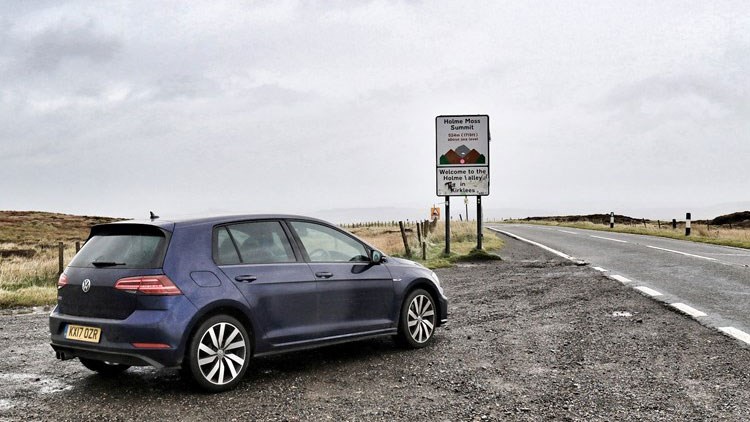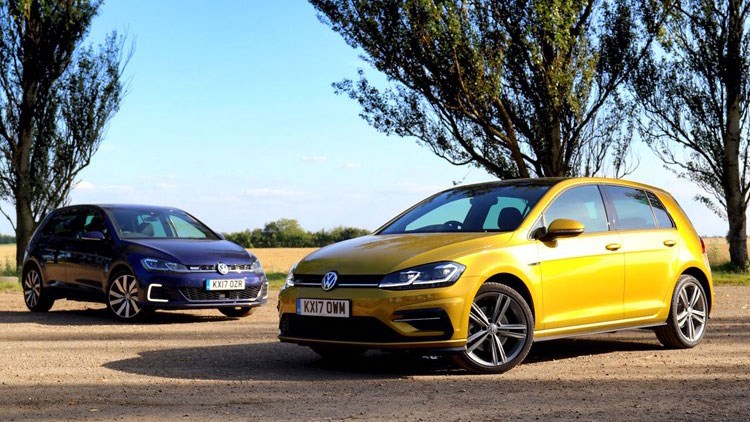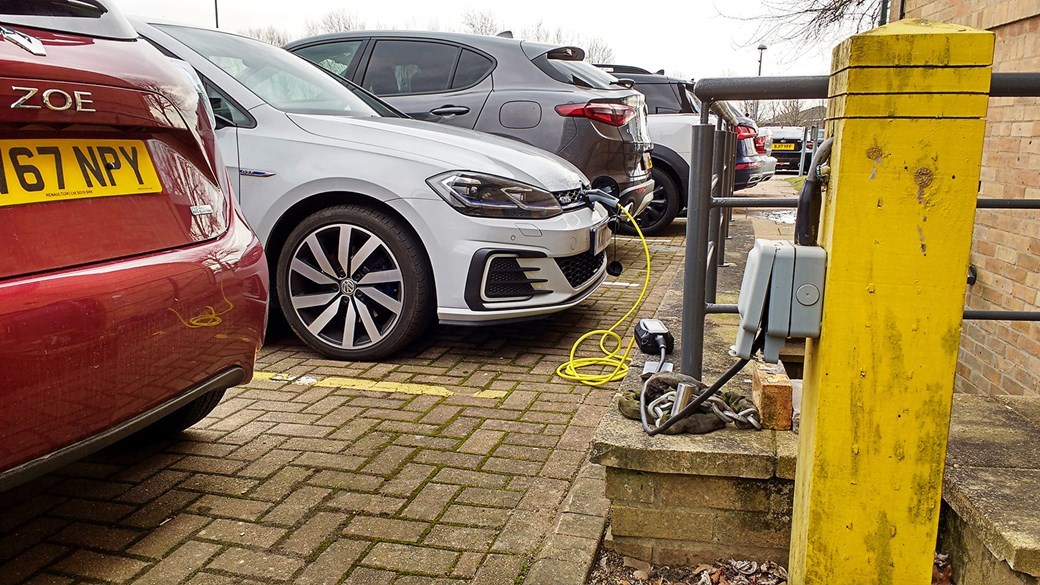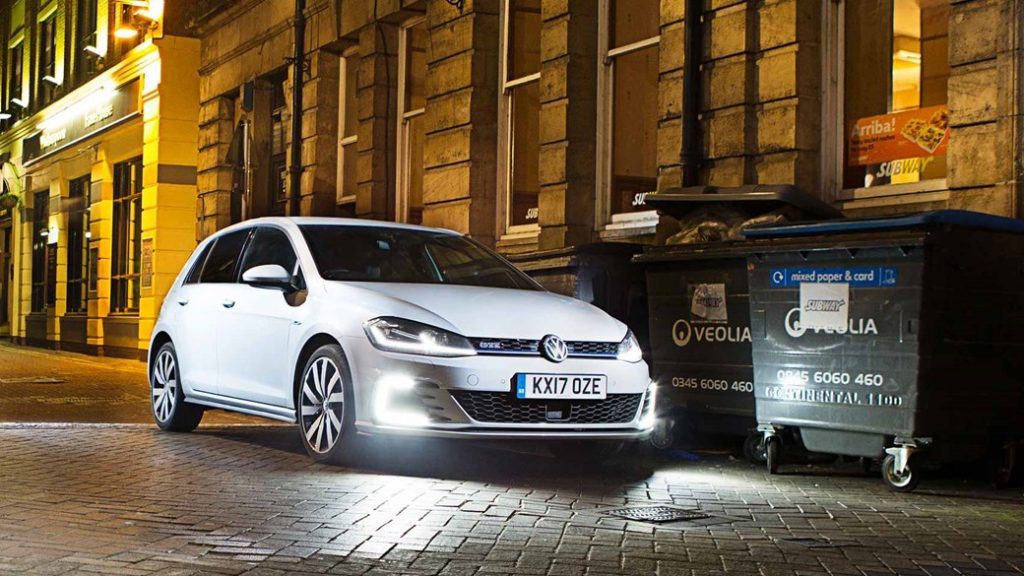There’s lots of reasons to buy a hybrid car in 2019. Dual-energy cars are better for the environment than their soley combustion-powered counterparts, they’re quieter when running in EV mode – and if you’re in the market for something tasty, they can be faster too.
However, one of the key reasons to buy a hybrid car right now, is the perceived lower running-costs. Thanks to the use of cheaper electric power, PHEVs can rack up more miles per gallon (when driven properly) than conventionally powered cars. They’re also subject to several discounts, too. You’ll find yourself paying less road tax than you would otherwise, and if you own a PHEV and drive in central London, you’ll likely not have to pay the congestion charge either.
But just how much money do you save from buying a hybrid? To find out, we’ve sidestepped the published figures you’ll find in brochures, and taken a look at the hybrid cars we’ve run on both CAR and our sister-site Parkers. Here we’re using a Golf GTE as a case study as it’s easily comparable to the Golf GTD diesel, a cheaper R-line model – and even the R model.

However, while there’s much to be learnt from using just a Golf as an example – we’ll continue to update this page with our experience of other hybrid cars – from crossovers like the Toyota C-HR, to the Volvo V90 T8.
Golf GTE: a VW hybrid case study
If you’re after an intriguing mix of performance and economy you’ll do worse than the Golf GTE. We’ve run not one, but two of the hybrid ‘warm’ hatchbacks across both Parkers and CAR, so that means we can draw on a whole year’s worth of ownership experience. We’ve also compared it to other models in the Golf range so you can see just how it matches up on a financial level.
Golf GTE long-term review: 6 months with Parkers
Golf GTE long-term review: 6 months with CAR
Golf GTE: initial costs
We’ve compared our Golf GTEs to the rest of the Golf range, and first it seems relatively tough on the wallet. Believe it or not, the GTE retails for around £31000 and £32000, and the pricier Advance model we ran cost £38,510 including £6375 of options. That’s with the government’s £2500 grant included.
On the face of it, any of the £25000-ish R-Line Golf models seem like a steal compared to our long-termer, but then they don’t include much of the tech of our hybrids. For example, they don’t include equipment like the heated seats, parking sensors, adaptive cruise control, big wheels and an automatic gearbox – so it’s not a completely direct comparison on the price front.

Adding those options to the R-Line to make it equivalent bumps up the price, and then the aforementioned government plug-in car grant, which our GTE qualifies for, narrows the gap further.
GTE vs R-Line
But this is where it gets more interesting. VW says you can get 156.9mpg from the GTE and 55.4mpg from the R Line – and while both of those figures are a bit fanciful, even if you take the modest 55mpg we’ve sometimes achieved in the GTE, and a conservative 45mpg for the R Line, our long termer will cost £20 less per month for a 12,000 mile a year driver. Not a huge saving, but congestion charging and other saving could be had on top.

GTE vs GTD
We’ve also compared out Golf GTE to the GTD diesel which costs around £28000 to £30000 depending on the model you go for. That price gulf begins to shrink when you look closer, though: the hybrid’s 40g/km official CO2 rating means the it’s cheaper than almost all other models to tax – save for the standard GTE and the all-electric e-Golf.
In fact you can expect monthly tax bills of £48.12 for the GTE instead of something closer to £121.17 for a five-door automatic GTD, with broadly similar performance and equipment.
GTE savings: CAR verdict
For CAR’s Colin Overland, the GTE’s plug-in benefits just weren’t worth pursuing, meaning that it wasn’t really topped up. ‘If the effect of not plugging in vs plugging in was dramatic in terms of petrol consumption, it might become worth the bother,’ writes managing editor Colin. ‘But it’s not. You end up getting something in the region of 37mpg, and 250 miles between £40-ish fills (with about 80 miles of careful petrol-only running still in the tank at that point), come what may.’

The result? The GTE wasn’t topped up with electricity very often – meaning it was sometimes just behaving like a heavier, petrol-engined Golf. And while we could’ve topped up the car more, we felt it was best to run the car as we would have if it were our own. With that in mind. CAR averaged 42.18mpg at a cost of 16.7p per mile.
GTE savings: Parkers verdict
The Parkers team fared better in the economy stakes, averaging a slightly higher 46mpg and and spending just 8.8p per mile. Parkers was able to almost halve their cost per mile thanks to more regular charging.
However, out sister-site team found that figure varied greatly – not just depending on the driving style, but the type of journey.
‘The worst tank of fuel was recorded in the Peak District,’ writes Parkers reviews editor Adam Binnie. ‘Where our repeated use of the GTE button and the need to charge the car’s battery from the engine meant we saw an eye-watering 33mpg.’
‘Get it on a good road and the electrical charge would soon wane, leaving you with essentially a heavier 1.4-litre petrol Golf, where a GTD would simply keep going. You can recharge it with the combustion engine, but then you’ll get 33mpg.’
In another example, we asked Managing Director of our magazine group’s motorcycling titles Rob Aherne to take a look at the GTE, as he was in the market for a GTD already.
Rob’s commute enabled him to achieve 55mpg in the GTE – ten more than we could with an R-Line – and 22mpg more than that thirsty Peak District trip.

GTE hybrid: so how much would you save?
So, while the hybrid car appears to represent a solid saving on paper, whether or not you’ll see a real saving depends very much on the type of travel you have – as well as your charging situation. However, we’ll revisit this verdict when we’ve taken a microscope to the other hybrid cars on our long-term fleet.
As for the GTE, though? Use it as a petrol car and you’ll see little benefit, use it for too many motorway roads or spirited driving and you’ll see the mpg tank. With PHEVs there are simply too many variables right now to clearly see how much you’ll save. It’s much easier with EVs, as it’s electric-only driving and charging or…. well, nothing.
Source: https://www.carmagazine.co.uk
CUT COTS OF THE FLEET WITH OUR AUDIT PROGRAM
The audit is a key tool to know the overall status and provide the analysis, the assessment, the advice, the suggestions and the actions to take in order to cut costs and increase the efficiency and efficacy of the fleet. We propose the following fleet management audit.




